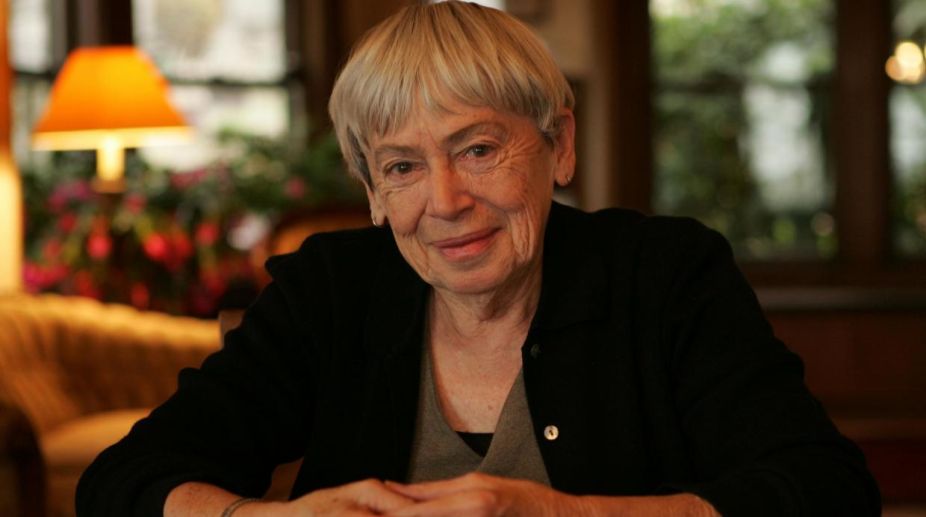China claims to receive signals from alien civilisations
Sky Eye, the largest radio telescope on Earth is located in China's Guizhou province. It has a diameter 500 metres (1,640 feet).

Ursula K Le Guin
With the death of author Ursula K Le Guin, we have lost not only a proponent of intelligent, thoughtful science fiction and fantasy but a giant of the literary world in general. Le Guin died last month at her home in Portland, Oregon, aged 88, after, her son Theo Downes-Le Guin told The New York Times, several months of poor health.
Not that it was hugely apparent. Despite her age, Le Guin was a prolific writer still, especially of articles for newspapers, websites and online platforms right up until her death, adding to her body of work that is rightly being referred to as classics of the fantasy genre especially.
Like many readers, I came young to Le Guin through her fantasy novel A Wizard of Earthsea, first published in the US, 50 years ago. Set on the fantasy world of the title — a world Le Guin would revisit five times more between 1971 and 2001 — it was a coming-of-age story of a young trainee wizard called Ged.
Advertisement
But A Wizard of Earthsea and its sequels, though ostensibly books for children, were a world away from Harry Potter, and subtly subversive in their subject matter for the time, with Ged being a dark-skinned protagonist, almost unknown for the period, and the themes of the book dealing with almost Eastern philosophies of balance and power.
While, as for me, the Earthsea books opened the door to the rich world of fantasy literature (I think I read the first one about the same time as the Narnia books by CS Lewis and Tolkien’s The Hobbit, making them for me the holy trinity of fantasy literature), it was discovering Le Guin’s other work as I grew up that really made her a permanent fixture in my reading landscape.
Born on 1 October 1929, Ursula Kroeber was the daughter of a Berkeley anthropologist father and a writer mother, brought up with three brothers in a liberal, bookish atmosphere that encouraged her writing from an early age — indeed, she wrote her first science fiction story at the age of nine, and was submitting material to magazines at the age of 11. She married the historian Charles Le Guin in 1953, and her short stories began to be published in various periodicals from the early 1960s.
The novel that cemented her reputation was 1969’s The Left Hand of Darkness, an astonishing exploration of gender, identity and androgyny through the eyes of an envoy sent to persuade a distant planet’s race of “ambisexual” denizens to join a galactic confederation. It is widely considered to be one of the first feminist science fiction books to be published, and won major awards in its year of publication including the Hugo and the Nebula.
Her 1974 novel The Dispossessed, set in the same universe as The Left Hand of Darkness, also scooped the Nebula and was in the author’s own words a reaction against the Vietnam War and an attempt to portray a society best described as “an anarchist utopia”.
She also explored utopias — and how efforts to create them can backfire, or have unexpected results — in 1971’s The Lathe of Heaven, in which a man in a then-futuristic Portland of 2002 has the power to create alternative realities through his dreams, and how his abilities are profiteered upon.
But though her best-loved works are from the 1970s, she continued to write novels and short stories with Lavinia, published in 2008, winning the Locus Award for its tale of a character from The Aenid by Virgil.
In recent years she had written a series of articles and comment pieces for a variety of outlets, and kept up a lively blog with regular, pin-sharp posts on society, politics and literature. The best of these were collected in a volume released just last month, the perhaps tellingly-titled No Time To Spare.
Unlike the work of many of her contemporaries, Ursula K Le Guin’s science fiction is not just “of its time” or a period piece. Her books should be read by everyone, because like the best science fiction they are not really about the future or distant worlds but about the here and now. And though Le Guin’s here and now might have been 30, 40, even 50 years ago when she first wrote these books, the themes she tackled are as relevant today as they were then — perhaps more relevant now than they’ve been since their publication.
That’s a sort of magic in itself. And not just any old magic — dragon magic, which any reader of Le Guin will know, is the wisest magic of all.
The independent
Advertisement